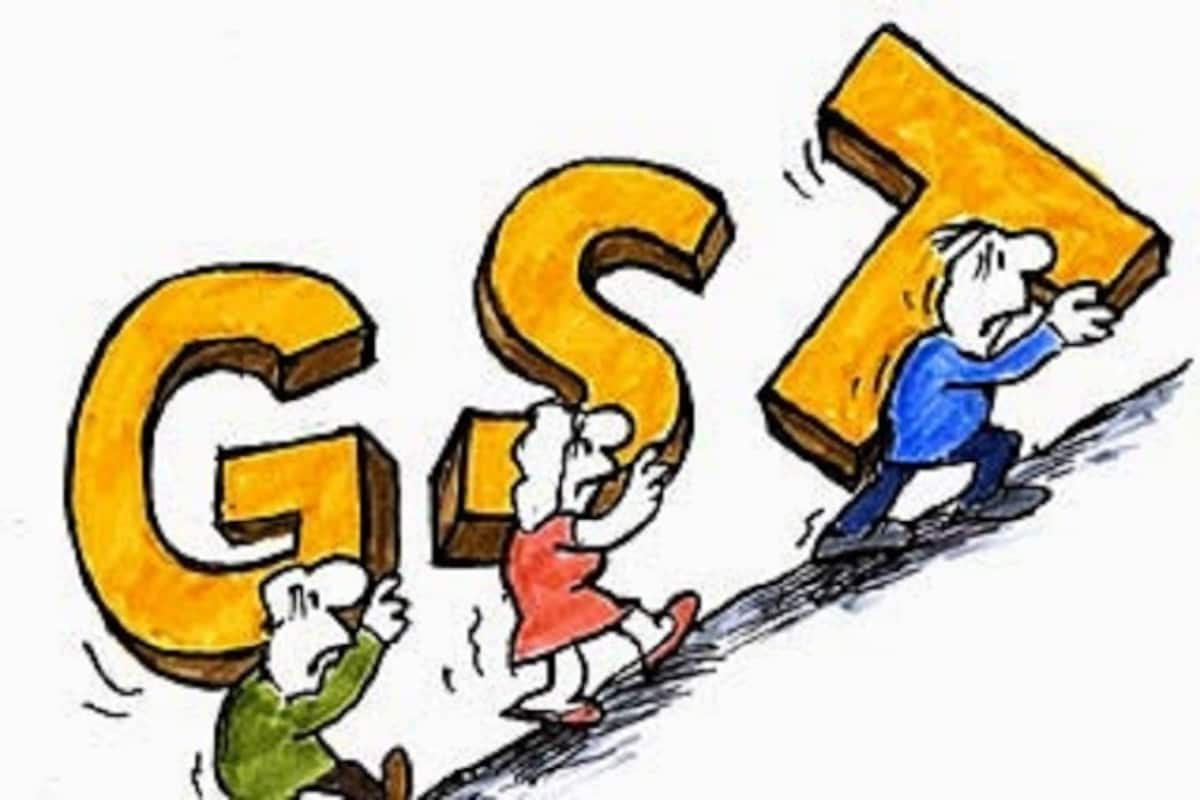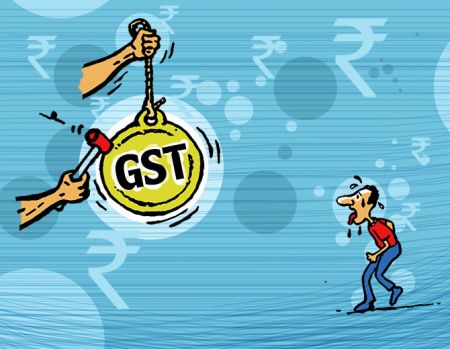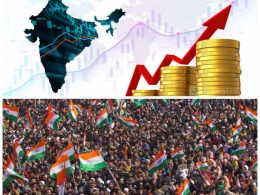Here we go again! Just when you thought your pockets couldn’t be squeezed any tighter, the government has a new idea—raising GST on so called premium products because why should you enjoy life when you can be taxed to death, right?
India’s complex tax system has always been a labyrinth of confusion, until, of course, the savior GST came along. Implemented on July 1, 2017, with the promise of simplifying this web of excise duties, VATs, and service taxes, GST was the knight in shining armor we all were waiting for. It was supposed to lower the burden on producers and consumers, unite India under one tax regime, and boost the economy.
Fast forward to September 2024: GST collections hit a whopping was 73 lakh crore marking 6.5 percent year-over-year growth. The total net GST revenue for September 2024 was Rs1. 52 lakh crore, a significant 3.9 percent increase from Rs1. 47 lakh crore in September 2023.
As per latest trends, several companies across sectors have received showcause notices from the Directorate General of GST Intelligence (DGGI) for unpaid taxes. Now for a common man this may not translate much in his daily life but the buck isn’t just stopping here!
With those numbers, you’d think the government would be satisfied. But no, a Group of Ministers (GoM) is back with a new plan—”rate rationalisation”—because apparently, taxing us more on things we don’t need (or want) is the solution to all of life’s problems.
What’s on the chopping block this time?
Shoes and wristwatches!
So here’s the deal: The GoM suggests that if you’re splurging on fancy shoes or watches, you should be taxed at the highest GST slab of 28%, up from the current 18%. Because clearly, if you can afford a pricey wristwatch, you must be living the life of royalty.
And why stop there? Let’s slap a luxury tax on pens over Rs 2,000. It doesn’t matter if it’s your basic Montblanc, at that price, it’s no longer just a pen—it’s a luxury pen.
(The GoM on rate rationalisation has favoured shifting shoes and apparel priced above Rs 15,000, and wristwatches above Rs 25,000, to the highest slab of 28%, from 18% at present — introducing the concept of pricebased GST rate. “While a watch is a daily-use item taxed at 18%, a luxury premium brand above Rs 15,000 should be treated as luxury good and taxed at 28% rate, and all members agreed to that,” a person aware of the deliberations).
The rationale, they claim, is simple: “Tax the rich, lower the burden on the common man.” Sure, because when you hike the tax on everyday luxuries like shoes, watches, and gasp pens, the government is obviously looking out for the aam aadmi. The GoM, led by Bihar’s Deputy CM Samrat Chaudhary, expects this ingenious move to rake in an additional Rs 22,000 crore in revenue.
Yay! More money in the treasury, less in your wallet.

The Finer Points Of GST Proposal
The increase in tax rates of some items is being examined to make good any possible revenue loss on account of lowering the tax rate on goods used by the common people.
The fitment committee under the council may prepare a detailed list of such items and discuss it in the next meeting, according to a person cited earlier. Currently, GST has a four-tier tax structure with 5%, 12%, 18% and 28% slabs.
The GoM is also considering lower taxes on some essential items, likely as a peace offering to the “common man.” Packaged drinking water of 20 litres or more could see a tax cut from 18% to 5%. Bicycles costing less than Rs 10,000 might also see their GST rate slashed to 5% from 12%, along with exercise notebooks, which could also drop to 5% from 12%.
But don’t get too excited. The GoM has suggested these tax hikes on premium products to offset the revenue loss caused by lowering taxes on essentials. Essentially, while you might save a little on your kids’ notebooks, your new shoes or wristwatch will cost you a lot more. And let’s be honest: the government stands to gain a solid Rs 22,000 crore from these proposed changes. That’s a whole lot of shoes and watches contributing to the nation’s coffers!
And it doesn’t end there. Other items that may soon face the 28% GST slap include hair dryers, hair curlers, and beauty products—because looking good is clearly a luxury
To add a dash of relief, there’s also a separate GoM looking into the taxation of insurance products. They’ve recommended exempting senior citizens from taxes on health insurance and reducing the GST rate to 5%, down from the current 18%, on health cover products up to Rs 5 lakh. However, there’s a catch—no input tax credit! Because of course, nothing should be too straightforward.
The six-member GoM is led by Bihar’s Deputy Chief Minister, Samrat Chaudhary, and includes prominent finance ministers from states like Uttar Pradesh, Rajasthan, Karnataka, and Kerala. Together, they’ve painted a vision of India where we’ll all be taxed more for living comfortably while saving pennies on basic essentials.
The next GoM meeting is scheduled for next month, where they will continue deliberating on their brilliant plan

What We Think: Stop the GST Gouging NOW
The GST Council is proposing to slap a 28% tax rate on a growing number of items, many of which are actually used by middle-income people. Shoes, watches, even pens over a certain price point are suddenly “luxury goods.”
Luxury?
Ask any middle-class individual with a family to feed and bills to pay, and they’ll tell you this is no luxury. This is absurd. A gut-gouging, pocket-emptying, out-of-touch policy move.
Let’s be real: the highest tax slab should be no more than 18%. At 28%, it feels like the government is charging us a “living tax” for daring to buy anything beyond basic necessities.
The GST was introduced to simplify our tax system and reduce the burden on consumers and producers. But here we are, a few years later, watching the tax burden creep higher and higher, with no meaningful gains for the economy or consumers.
Who’s Really Behind This?
Over the last few years, it’s the finance ministers of several states who’ve been leading the charge to hike GST rates. Sure, higher rates swell the GST, but are they helping businesses?
No. Has it propelled economic growth?
Not really. Raising GST rates without stimulating demand is like milking a cow that’s already starving—it’s counterproductive. Once you hit a certain threshold, consumer spending will slow down. And guess what? That means fewer jobs, lower growth, and ultimately, less tax revenue in the long run.
So, what’s the point of all this? More money in the government’s pocket and a slower economy? Is this how we plan to achieve prosperity?
The GST Council: Mars or Earth?
It’s almost as if the GST Council and GoM (Group of Ministers) aren’t living on Earth anymore. Mars, maybe? If they were paying attention to the realities on the ground—like the constant struggles of the lower middle class—they would realize how nonsensical this 28% tax slab is.
Do they understand what is truly essential for the poor and middle class? Or are they so far removed from everyday life that they can’t tell the difference between an essential item, a convenience item, and a luxury item?
It’s not just about the rich. The average middle-income family do buy expensive shoes sometimes, a Rs 25,000 wristwatch is often a one-time investment, not a monthly indulgence. If the GST Council thinks slapping 28% tax on such items is justified, then they clearly don’t understand who their policies are affecting.
Is the Government Running a Business?
If the government were a business, taxes would be its profit. And with a 28% GST rate, it’s making a “profit” that even the most successful companies could only dream of. India Inc., on the other hand, is barely scraping by with profit margins of less than 10%—many companies are even running at a loss.
So, why is the government so intent on making an excessive “profit” at the expense of its citizens? And more importantly, where is all this money going? Infrastructure, maybe? Jobs? Education? Or is it just getting lost in the never-ending maze of bureaucracy?
A government is not a business. Its purpose is to serve the people, not milk them for every rupee. If the rationale behind these higher GST rates is to make up for revenue shortfalls elsewhere, then maybe the government should be looking at more efficient ways to manage its finances rather than squeezing more out of a population already grappling with rising costs.
The Inevitable Backlash
If these GST hikes continue, consumption is going to decelerate. People will think twice before making purchases, businesses will suffer, and ultimately, the very tax revenue the government is so hungry for will begin to dry up. You can’t keep gouging the same customers over and over again without consequences. The long-term impact of this short-sighted approach will be less consumption, fewer jobs, and an overall slowdown in the economy.
The irony is that, while the GoM deliberates on how to fill the government’s coffers with more tax revenue, they’re probably shooting themselves in the foot. After all, when businesses and consumers both suffer, who’s left to pay all those taxes?
It’s time to wake up and recognize that raising taxes endlessly is not the answer. The solution lies in fostering growth, creating jobs, and building a thriving economy where businesses succeed and consumers feel confident to spend.
It’s time to wake up and recognize that raising taxes endlessly is not the answer. The solution lies in fostering growth, creating jobs, and building a thriving economy where businesses succeed and consumers feel confident to spend.
At this rate, if the government continues down this road of tax terrorism, then perhaps we should start planning for a tax on the very air we breathe, after all, with pollution levels soaring, can a “luxury lung” tax be far behind









